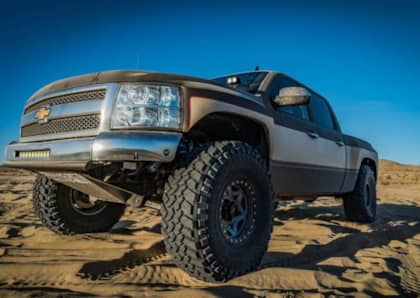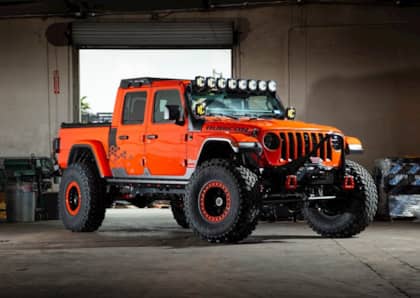Steering You Straight: What is Wheel Offset and Scrub Radius?
Wheel offset can be complicated because many people tend to use the term “offset” and “backspacing” interchangeably when they should not.

Offset of a wheel is the distance from the wheel mounting surface to the centerline of the wheel. Backspacing is the measurement from the wheel mounting surface to the inside edge of the wheel. Note that offset is always measured in millimeters, and backspacing is measured in inches. For reference, the tire and wheel used for illustration in this article (below) is a 38x13.50R17 Nitto Trail Grappler on a -38mm offset 9” wide KMC Machete beadlock wheel.

What is Wheel Offset?
Offsets are often chosen for a certain look or for tire clearance reasons. Bigger tires or wider wheels may require modifications from stock specs. Additionally, many aftermarket wheels are only available in more negative offsets, especially for off-road wheels. Clearance and a wider stance is good, however things can get interesting when it comes to steering performance. A wide wheel with lots of negative offset will move everything away from your steering axis, creating a higher scrub radius.

What is Scrub Radius?
The distance between the tire center line and the steering axis is the scrub radius. A positive scrub radius would have your tire center further out from your steering axis, in contrast a negative scrub radius would have your tire center inside your steering axis. The performance differences vary vastly with different scrub radius, but it is often found on OEM vehicles that scrub radius is close to 0. So a wheel with a more negative offset would net a more positive scrub radius. A “0 offset” wheel may or may not net a 0 scrub radius, depending on the size of the tire. Yes, the height of the tire also comes into play when calculating scrub. Taller tires actually help the scrub radius when using a more negative offset wheel.

A stock Jeep JK Unlimited Rubicon scrub radius is approximately positive 1-1.5-inch with 32” tires. My not-so-precise measurements put the Jeep as tested at a positive 2.5-inch scrub with 38” tires. Sounds like the best solution for regaining steering performance is to run 40s? That is an article for later.

Steering performance can be effected greatly by more positive or more negative scrub radius. With a high positive scrub for example, your front tires do not pivot on their center, but instead arc or swing front and back as it steers. Hence, the tire is “scrubbing” the ground as you steer. This will require more effort to steer, and in IFS applications it can effect suspension performance as a whole as the leverage increases. Positive scrub will provide more feedback to your steering wheel from bumps. The more the scrub, the more feedback and steering effort is needed. Negative scrub radius will also increase the steering effort, however at a much less noticeable degree than the positive kind. Imagine a blow-out or single brake failure with a lot of leverage away from the steering axis, it will pull the steering drastically, hypothetically.

Calculating your own scrub radius is easier said than done, but it can be measured in your own garage. If you can calculate or happen to know your steering axis angle (lower ball joint in relation to your upper ball joint), or can Google what your vehicle is supposed to have, the rest is easy. It may help you decide the optimum wheel offset and tire size.












